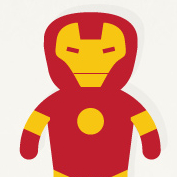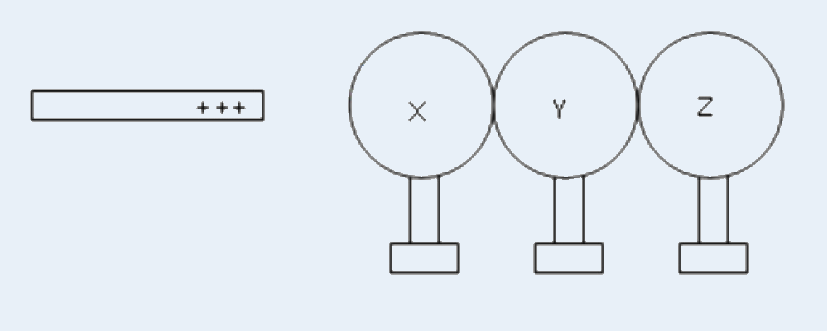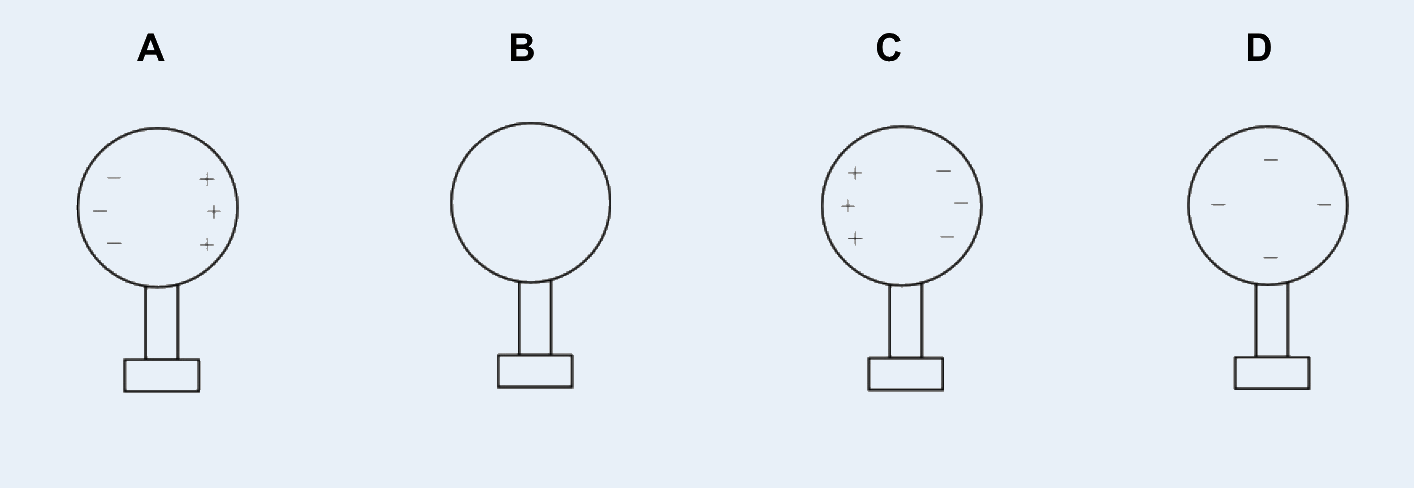
Ben
 Hello
Hello- Hi
- Can u explain why Y has no charges ?
 Sure.
Sure. So first thing you need to understand
So first thing you need to understand When the 3 spheres are put together, charges can move within. Charges I’m referring to the negative charges.
When the 3 spheres are put together, charges can move within. Charges I’m referring to the negative charges.- But the positive charges cannot move right
 So when the positive charged rod is brought near to the LHS of the sphere, the negative charges in the 3 spheres all move towards the sphere on the left.
So when the positive charged rod is brought near to the LHS of the sphere, the negative charges in the 3 spheres all move towards the sphere on the left. Yes, you are right
Yes, you are right- Then how come Y has no positive or negative
 I think the diagram is not illustrating it has no charge. Rather it is showing that the number of positive and negative charges even out each other
I think the diagram is not illustrating it has no charge. Rather it is showing that the number of positive and negative charges even out each other That’s why it is neutral in charge
That’s why it is neutral in charge- Ohh
- So the number of charges on the left and right side of Y are equal ?
 Not exactly
Not exactly Rather cos Y is in the middle, that is where it forms this neutral space, where the charges are sort of evenly distributed within the sphere
Rather cos Y is in the middle, that is where it forms this neutral space, where the charges are sort of evenly distributed within the sphere Is like a magnet
Is like a magnet If the LHS is North Pole, the RHS is South Pole
If the LHS is North Pole, the RHS is South Pole The middle of the magnet has no polarity, it is sort of neutral in charge.
The middle of the magnet has no polarity, it is sort of neutral in charge.- Ahh i see
- Okay thank you
 ?
?















 Adeline Lee,
Adeline Lee, 



